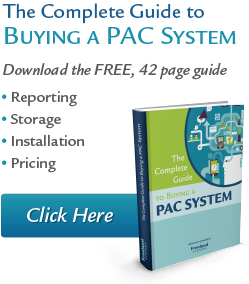Expense Classification Considerations
One of the first considerations to identify in the purchasing process is how you plan on classifying the expense. The two primary ways a practice can classify their investment in a PAC System are as a capital cost or as an operational cost. When using the capital cost method, the PACS is purchased outright with the cost being amortized over time and treated as a write off. This method is ideal if you have a set amount of cash on-hand and want to lower your tax burden over time. When a PAC System is classified as an operational expense, the cost of the system will be paid out of monthly expenses. This could be due to the pricing structure of the PACS vendor (fee per study method) or an internal accounting method.
Each of these methods has advantages and disadvantages and it’s best to talk to your accountant to see which method is the best fit for your practice. Knowing which method you plan to use will help guide the budgeting process and help you review estimates.
Tax Considerations
When considering the cost of your new PAC System for your practice, remember the significant changes that have recently been made to Section 179 of the IRS Tax Code. Essentially, Section 179 now allows businesses to deduct the cost of all the capital equipment and other assets purchased for business use in the same year the equipment is purchased.
So, instead of having your practice go through the process of depreciating the cost of your major equipment investment over a number of years, you can write off the entire purchase price in the year you purchase and rollout your new PAC System. The total amount you invest, up to $500,000 per year for business expenses, can be deducted straight away. In addition,”50% bonus” depreciation in the tax code allows businesses to take a deduction for equipment purchased beyond the $500,000, with a maximum combined deduction of $2M for a tax year.



